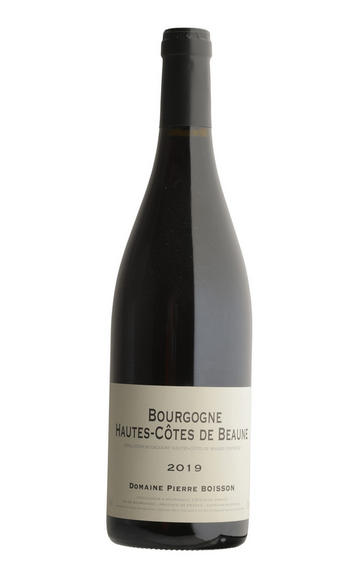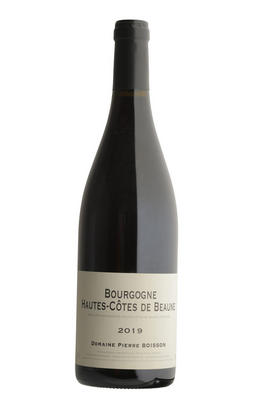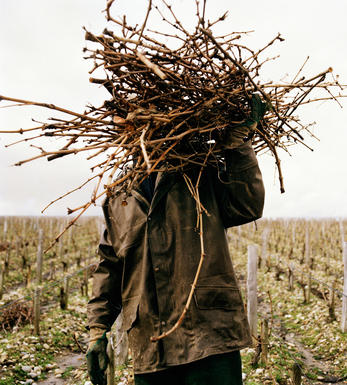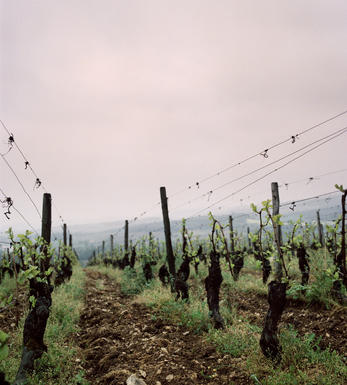
2018 Bourgogne Rouge, Hautes-Côtes de Beaune, Pierre Boisson, Burgundy

About this WINE

Domaine Boisson-Vadot
Domaine Boisson-Vadot, run by father and son team of Bernard and Pierre Boisson, is one of the rising stars in Mersault. The philosophy of the Domaine revolves around careful, hands-on vineyard management to coax the greatest potential of each vintage out of the various plots, and low-impact winemaking in the cellars that allows the unique terroir of each vineyard to surface. New oak is very minimal, no more than 30% for the top cuvées, and much more restraint in the village wines and in Bourgogne Blanc.
Pierre Boisson produces a village Meursault from his grandmother’s vineyards (50 year old vines in the lieu-dits of Criots and Perchots) that is hailed an model wine for the appellation. The Domaine also crafts other bottlings, from three of the best lieux à dits in Meursault: Sous la Velle , Grands Charrons (planted in 1988) and Chevalières (planted in 1982). The Grands Charrons is the most expressive, intensely flavoured of the three. The Sous la Velle is a more elegant version of the Grand Charrons. The Chevalières is the most mineral-driven, with a more restraint fruit flavours in its youth but great ageing potential- More like premier crus than village wines. Finally, Boisson-Vadot makes a powerful yet charming Meursault Genevrières premier cru.

Bourgogne Rouge
Bourgogne Rouge is the term used to apply to red wines from Burgundy that fall under the generic Bourgogne AOC, which can be produced by over 350 individual villages across the region. As with Bourgogne Blanc and Bourgogne Rosé, this is a very general appellation and thus is hard to pinpoint any specific characteristics of the wine as a whole, due to the huge variety of wines produced.
Around 4,600 acres of land across Burgundy are used to produce Bourgogne Rouge, which is around twice as much as is dedicated towards the production of generic whites.
Pinot Noir is the primary grape used in Bourgogne Rouge production, although Chardonnay, Pinot Blanc, Pinot Gris and in Yonne, César grapes are all also permitted to make up the rest of the wine. These wines tend to be focused and acidic, with the fruit less cloying than in some New World wines also made from Pinot Noir, and they develop more floral notes as they age.
Although an entry-level wine, some Bourgogne Rouges can be exquisite depending on the area and producer, and yet at a very affordable price.

Pinot Noir
Pinot Noir is probably the most frustrating, and at times infuriating, wine grape in the world. However when it is successful, it can produce some of the most sublime wines known to man. This thin-skinned grape which grows in small, tight bunches performs well on well-drained, deepish limestone based subsoils as are found on Burgundy's Côte d'Or.
Pinot Noir is more susceptible than other varieties to over cropping - concentration and varietal character disappear rapidly if yields are excessive and yields as little as 25hl/ha are the norm for some climats of the Côte d`Or.
Because of the thinness of the skins, Pinot Noir wines are lighter in colour, body and tannins. However the best wines have grip, complexity and an intensity of fruit seldom found in wine from other grapes. Young Pinot Noir can smell almost sweet, redolent with freshly crushed raspberries, cherries and redcurrants. When mature, the best wines develop a sensuous, silky mouth feel with the fruit flavours deepening and gamey "sous-bois" nuances emerging.
The best examples are still found in Burgundy, although Pinot Noir`s key role in Champagne should not be forgotten. It is grown throughout the world with notable success in the Carneros and Russian River Valley districts of California, and the Martinborough and Central Otago regions of New Zealand.


Buying options
Add to wishlist
wine at a glance
Delivery and quality guarantee